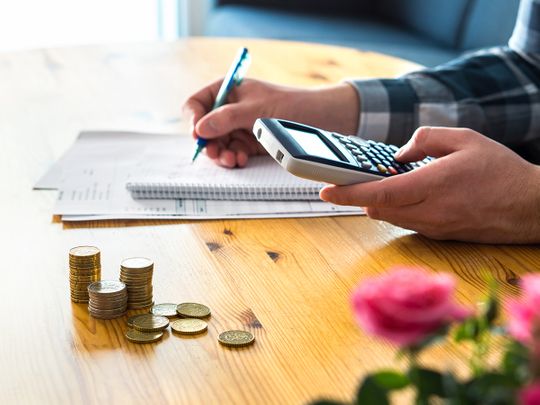
Every day, people grapple with decisions on how best to spend their finite income, on their many wants and needs. Should you order in, or cook at home today? Is your wardrobe too outdated for your glamorous job? Do you save to buy a home, or splurge on a holiday next summer?
Click start to play today’s Spell It, where money matters may ‘require’ you to change how you think.
One way to find a balance and manage your expenses smartly, is by following the Japanese budgeting technique of kakeibo. According to a Septembr 2023 report in the US-based multimedia website Big Think, this philosophy helps people to look past the obvious and go to the essence of their finances – so you don’t just realise what to do with your money, you learn how to spend it well, save diligently and live comfortably.
Japan’s first female journalist, Hani Motoko, is credited for developing kakeibo in 1904. Her goal was to help women in her time, since they often lived on a limited budget. The concept is different from other budgeting strategies in that it includes elements of simplicity and mindfulness.
To start off, kakeibo requires you to complete a mindfulness exercise, with four self-reflective questions:
- How much income do you make a month?
- How much would you like to save?
- How much are you currently spending?
- Where would you like to improve?
Once you’re clear on how you want to use your money to facilitate a satisfying life, it’s time to get into mathematics.
At the beginning of the month, calculate your projected income and then subtract your fixed costs, like rent, utilities and other bills. Whatever remains is the amount that you can play with – to spend or save.
The next step is to make note of your expenses as the month progresses. Each time you spend, write it down and label it as one of four categories: Essentials (toiletries, groceries, fuel); non-essentials (movies, restaurants); culture (books, charity, museum visits); unexpected (doctor visits, car repairs, a gift for a friend).
Once you simplify your spending into these four categories, a bigger picture emerges. More importantly, you’re more mindful about how you’re spending your money. For instance, if you buy shoes on a whim, you can put it down in the non-essentials category, but if you buy them for work, you can put it in the essentials category.
Most people who follow kakeibo jot down their expenses via handwritten notes in a ledger. It’s a strategy that works – a March 2021 study by the University of Tokyo, Japan, published in the journal Frontiers in Behavioural Neuroscience found that physically writing down something allows you to retain information better and creates a stronger connection with the content. But if it’s easier, you can always use a digital spreadsheet instead.
At the end of the month, review your spending. Calculate how much you spent in each category, as well as how much you saved, and then compare the results against the goals you set up. If you were able to reach your savings goal, bravo! But if not, don’t feel ashamed – kakeibo is about being mindful of how your money comes and goes, and tweaking it to best suit your lifestyle.
The system helps make your decisions over the month a lot clearer to you, so that eventually, you’ve embraced another Japanese philosophy of life – nagomi. Nagomi is all about understanding and enhancing the positive aspects of our lives, in order to balance the difficulties that we inevitably face.
What do you think of kakeibo? Play today’s Spell It and tell us at games@gulfnews.com.






